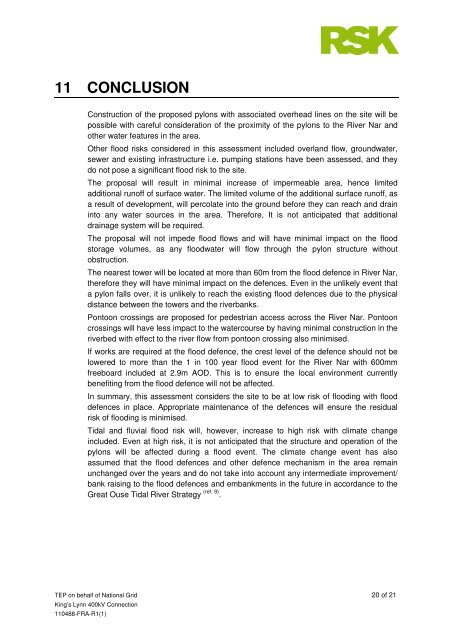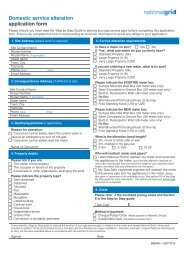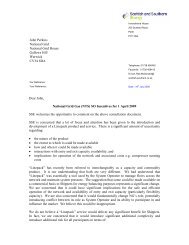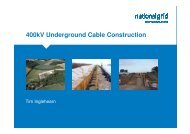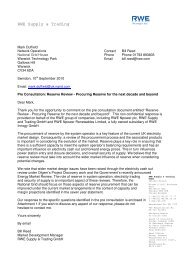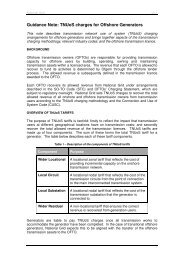appendix a - National Grid
appendix a - National Grid
appendix a - National Grid
You also want an ePaper? Increase the reach of your titles
YUMPU automatically turns print PDFs into web optimized ePapers that Google loves.
11 CONCLUSION<br />
TEP on behalf of <strong>National</strong> <strong>Grid</strong> 20 of 21<br />
King’s Lynn 400kV Connection<br />
110488-FRA-R1(1)<br />
Construction of the proposed pylons with associated overhead lines on the site will be<br />
possible with careful consideration of the proximity of the pylons to the River Nar and<br />
other water features in the area.<br />
Other flood risks considered in this assessment included overland flow, groundwater,<br />
sewer and existing infrastructure i.e. pumping stations have been assessed, and they<br />
do not pose a significant flood risk to the site.<br />
The proposal will result in minimal increase of impermeable area, hence limited<br />
additional runoff of surface water. The limited volume of the additional surface runoff, as<br />
a result of development, will percolate into the ground before they can reach and drain<br />
into any water sources in the area. Therefore, It is not anticipated that additional<br />
drainage system will be required.<br />
The proposal will not impede flood flows and will have minimal impact on the flood<br />
storage volumes, as any floodwater will flow through the pylon structure without<br />
obstruction.<br />
The nearest tower will be located at more than 60m from the flood defence in River Nar,<br />
therefore they will have minimal impact on the defences. Even in the unlikely event that<br />
a pylon falls over, it is unlikely to reach the existing flood defences due to the physical<br />
distance between the towers and the riverbanks.<br />
Pontoon crossings are proposed for pedestrian access across the River Nar. Pontoon<br />
crossings will have less impact to the watercourse by having minimal construction in the<br />
riverbed with effect to the river flow from pontoon crossing also minimised.<br />
If works are required at the flood defence, the crest level of the defence should not be<br />
lowered to more than the 1 in 100 year flood event for the River Nar with 600mm<br />
freeboard included at 2.9m AOD. This is to ensure the local environment currently<br />
benefiting from the flood defence will not be affected.<br />
In summary, this assessment considers the site to be at low risk of flooding with flood<br />
defences in place. Appropriate maintenance of the defences will ensure the residual<br />
risk of flooding is minimised.<br />
Tidal and fluvial flood risk will, however, increase to high risk with climate change<br />
included. Even at high risk, it is not anticipated that the structure and operation of the<br />
pylons will be affected during a flood event. The climate change event has also<br />
assumed that the flood defences and other defence mechanism in the area remain<br />
unchanged over the years and do not take into account any intermediate improvement/<br />
bank raising to the flood defences and embankments in the future in accordance to the<br />
Great Ouse Tidal River Strategy (ref. 9) .


